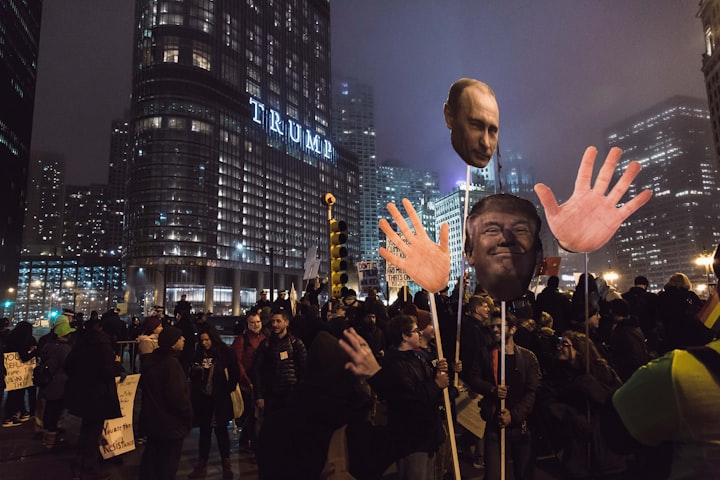The Fence between Two Lands
Growing up Mixed-Race in Australia

I sit on a fence that stands between two lands,
believing in a space those unlike me cannot see,
and so they tell me,
‘darling, get down, for one side only, you must be’.
I grew up in Queensland to a Caucasian, English-Australian mother and a South Indian father. My primary school held a diverse mix of ethnicities, so race was never something I thought about, much less encountered issues with. The most I endured was the mispronunciation of my name and being asked if I had a shorter, easier nickname, often being called a range of things that weren’t asked my permission of but instead were chosen for me. ‘Sanga, Sangee, Geeta, Sang, SG, S-Dog, Sangatron 3000’ … (the things kids think of I tell you). But when high school came around and I left to attend a private school farther away from my previous friends, casual racism was a new experience I was very soon to discover.
It’s only recently that I have a name, ‘casual racism’, to put to all the underplayed comments and jokes I endured from the people at my very Caucasian high school. And I can’t say it was all bad, because it wasn’t. It was a great school, but those little, perhaps ‘insignificant’ comments, can hit harder than you would imagine on an impressionable teenager still figuring out who they are in the world.
Of the three hundred kids in my year alone, about thirty of them were from ethnic backgrounds. And of those thirty kids, the majority of them were Mixed-Race. I remember how much the Ethnic kids used to try to fit in with their Caucasian peers, even resulting in allowing themselves to be the butt of the joke – at their background’s expense. A girl in my friendship group was surprised that the ‘palms of my hands weren’t brown’ and told me that when she saw me with my mother, she assumed I was adopted. Throughout high school, I was the only Ethnic person in my friendship group, and with the Indian side of me being pointed out so often, I wanted nothing more than to prove how much more ‘Caucasian’ I actually was. I was embarrassed and angered to be called ‘Indian’ alone, and growing up in a Western country – along with a closeness to my Caucasian mother that I didn’t share with my Indian father, I felt I related more to my ‘white’ side. “I’m basically sixty percent white”, I would tell my mother. But the funny thing about being mixed, is that a few shades of skin can completely change which side people choose to bracket you into. According to the world around me, I was just a few shades too dark to ‘pass’. And apparently that meant I could not claim being fifty-percent Caucasian and essentially had to ignore my mother’s existence entirely.
When I moved to Sydney to pursue an Acting career, I was hit by a whole new ballpark of identity plaguing difficulties, along with what felt like a culture shock of just how Diverse Australia actually is. While the film industry was trying to pretend my Caucasian blood didn’t exist, the vast amount of cultures, ethnicities and other mixed-race people, was stirring something up in me that I hadn’t felt before. No small coastal town, this was a city filled with cultures and people who called themselves Australian yet were still proud of their ethnic roots and traditions.
While in the presence of a group of fully South Asian Australians, I suddenly felt embarrassed to not know how to speak a word in my father’s native tongue. I couldn’t help but feel like the odd one out once again, with my ‘whiteness’ and lack of understanding of my father’s culture now being pointed out for all to see. In a world that can feel so black and white at times, it often seemed that no matter which side I tried to blend into, I couldn’t help but being an ‘unusual’ shade of grey. Neither here nor there. Never quite transforming enough to fit the box society tried to push me into. And how could I? To me, the answer was plainly simple. I was Mixed-Race, born of two cultures – a new box entirely. But no matter how much I tried to preach this fact, no one seemed to understand. To them that box was invisible. I’d even watch other Mixed-Race people somehow finding their place on one side of the fence – which did nothing more than add to the already difficult struggle of finding my own identity. It’s a very suffocating thing to know who you are, who you truely are, yet be constantly told who you should be. At some point you have to let go, ignore the crowd and find your own path to truely set yourself free.
Being in a city surrounded by Diverse communities who embraced their Ethnic Australian backgrounds, had caused me to see my own identity in a brand new way. It was no longer ’embarrassing’ to be Indian anymore and common stereotypes of Indian Culture no longer sufficed the new people around me. As I got older, I grew closer to my father. I began to understand him more and found myself observing his traditions more closely. I listened when he spoke about his pastimes in India and eventually I started to gain an appreciation of the beauty of his culture, a part of who I was that I had neglected to discover previously. Slowly, I found myself feeling more complete, more at one, more at peace, now that I had explored this other side to my identity.
I realised, this idea thrust upon those of Mixed-Race backgrounds that you must ‘choose a side’, had made me feel like I couldn’t be proud of one part of myself in order to be proud of the other. That to love one, I had to hate the other. It was deemed too confusing to be both and much too difficult to have ‘Mixed-Race’ as an option on forms that ask you to list your Ethnic background. Instead you were left to choose ‘Other’ – if that box even existed. But must all those who are Mixed-Race be subjected to how dark or light they are? To tick one box and be denied that their other half even matters, that they can not logically co-exist?
I used to ask people to guess my background upon meeting me for the first time. When their guesses took them all over the world it made me feel good, as if to say, ‘Yes! You can’t guess, so how can you box me now?‘. But on my journey to discovering where I fit into this world, to finding my place, I’ve realised I don’t need to prove anything to anyone, in order to feel the way I feel and identify the way that feels right. The world is an ever changing place, much too large for its labels, and Australia grows more multicultural by the day. I love both of my parents equally today and I have grown to appreciate the blend of cultures they have gifted me with. It’s taken me a lot to get to where I am today in terms of my identify, but the more I embrace both sides as one whole – one new whole, the more at peace I feel, even if that whole is not understood by everyone around me.
Some may still believe I’m merely sitting on a fence,
but I know my place there is planted.
A new land,
encompassing two wholes,
there, I stand.
About the Creator
Sangeetha Gowda
Actor | Writer | Director | Mixed Race Aussie 🇦🇺
.
Writing away my emotional breakdowns and creating thought provoking films that showcase diversity, as I work towards catching a break in my Acting career.
.
#mentalhealth






Comments
There are no comments for this story
Be the first to respond and start the conversation.